
The President of the Principality of Asturias ; Asturian: Presidente del Principáu d'Asturies) is the head of government of the Spanish autonomous community of Asturias. The president is chosen by the General Junta of the Principality of Asturias, autonomous parliamentary institution.
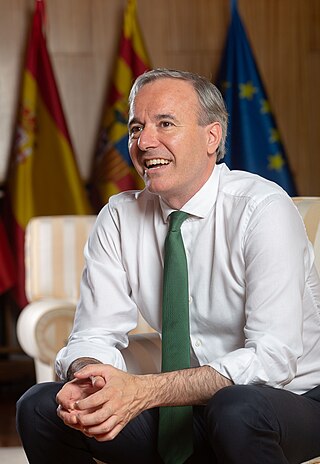
The president of the Government of Aragon, also known as the president of the General Deputation of Aragon or, simply, the president of Aragon, is the head of government of Aragon, an autonomous community in Spain. The President is elected to a four-year term by the Aragonese Corts.

The president of the Regional Government of Andalusia or, simply the president of Andalusia, is the premier of the devolved government of the Spanish autonomous community of Andalusia. The presidency is one of the three branches of the Regional Government of Andalusia (Junta de Andalucía), the institution whereby the government of the community is organized. The other two branches of are the Parliament of Andalusia and the Council of Government.

The president of the Junta of Castile and León is the executive head of government of the Spanish autonomous community of Castile and León. The president is the head of the Junta of Castile and León, or regional government.

The second government of Susana Díaz was formed on 18 June 2015 following the latter's reelection as President of Andalusia by the Parliament of Andalusia on 11 June and her swearing-in on 14 June, as a result of the Socialist Party of Andalusia (PSOE-A) emerging as the largest parliamentary force at the 2015 Andalusian regional election. It succeeded the first Díaz government and was the Government of Andalusia from 18 June 2015 to 22 January 2019, a total of 1,314 days, or 3 years, 7 months and 4 days.

The third government of Guillermo Fernández Vara was formed on 2 July 2019, following the latter's election as President of Extremadura by the Assembly of Extremadura on 25 June and his swearing-in on 27 June, as a result of the PSOE emerging as the largest parliamentary force at the 2019 Extremaduran regional election by securing an absolute majority of seats in the Assembly. It succeeded the second government of Guillermo Fernández Vara and was the Government of Extremadura from 2 July 2019 to 21 July 2023, a total of 1,480 days, or 4 years and 19 days.
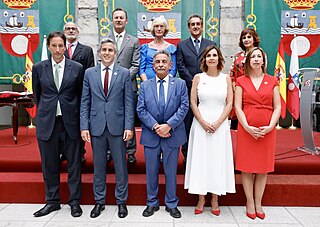
The second government of Miguel Ángel Revilla was the regional government of Cantabria during the 10th legislature (2019–2023).
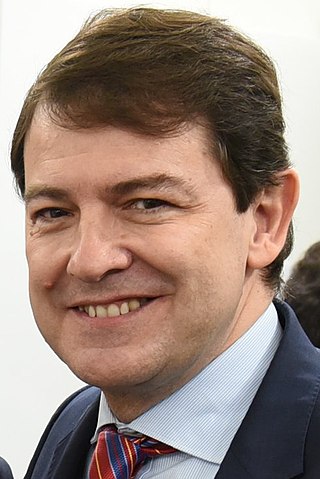
The first government of Alfonso Fernández Mañueco was formed on 17 July 2019, following the latter's election as President of the Junta of Castile and León by the Cortes of Castile and León on 9 July and his swearing-in on 12 July, as a result of the People's Party (PP) and Citizens (Cs) being able to muster a majority of seats in the Cortes following the 2019 Castilian-Leonese regional election. It succeeded the fifth Herrera government and was the Junta of Castile and León from 17 July 2019 to 20 April 2022, a total of 1,008 days, or 2 years, 9 months and 3 days.

The first government of Adrián Barbón was formed on 25 July 2019, following the latter's election as President of the Principality of Asturias by the General Junta of the Principality of Asturias on 15 July and his swearing-in on 17 July, as a result of the Spanish Socialist Workers' Party (PSOE) emerging as the largest parliamentary force at the 2019 regional election. It succeeded the second Fernández government and was the incumbent Government of the Principality of Asturias between 25 July 2019 and 31 July 2023, a total of 1,467 days, or 4 years and 6 days.

The second government of Fernando López Miras was formed on 1 August 2019, following the latter's election as President of the Region of Murcia by the Regional Assembly of Murcia on 26 July and his swearing-in on 29 July, as a result of the People's Party (PP) allying itself with Citizens (Cs) and mustering the external support from Vox in exchange for policy compromises following the 2019 Murcian regional election. It succeeded the first López Miras government and has been the incumbent government of the Region of Murcia since 1 August 2019, a total of 1,894 days, or 5 years, 2 months and 6 days.

The second government of Javier Lambán was formed on 7 August 2019, following the latter's election as President of the Government of Aragon by the Cortes of Aragon on 31 July and his swearing-in on 3 August, as a result of the Spanish Socialist Workers' Party (PSOE) emerging as the largest parliamentary force at the 2019 regional election. It succeeded the first Lambán government and was the Government of Aragon from 7 August 2019 to 12 August 2023, a total of 1,466 days, or 4 years and 5 days.
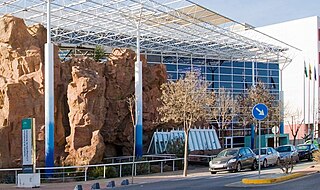
Instituto de Estadística y Cartografía de Andalucía (IECA) is a public organization which coordinates and announces statistics and cartography in Andalucía. In 2019 it was named Elena Manzanera Díaz as the directress.

The Third Urkullu Government was the regional government of the Basque Country led by President (Lehendakari) Iñigo Urkullu between 2020 and 2024. It was formed in September 2020 after the regional election.

The first government of Susana Díaz was formed on 10 September 2013 following the latter's election as President of Andalusia by the Parliament of Andalusia on 5 September and her swearing-in on 7 September, as a result of the resignation of the former president, José Antonio Griñán, over the erosion of the ERE scandal, a large slush fund corruption scandal involving former leading figures of the regional PSOE's branch, including former development minister Magdalena Álvarez, with former Andalusian president Manuel Chaves and himself being accused of knowing and concealing such a plot. It succeeded the second Griñán government and was the Government of Andalusia from 10 September 2013 to 18 June 2015, a total of 646 days, or 1 year, 9 months and 8 days.
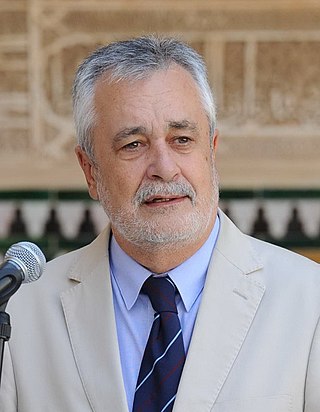
The second government of José Antonio Griñán was formed on 7 May 2012 following the latter's election as President of Andalusia by the Parliament of Andalusia on 3 May and his swearing-in on 5 May, as a result of the Socialist Party of Andalusia (PSOE–A) and United Left (IULV–CA) being able to muster a majority of seats in Parliament following the 2012 Andalusian regional election, despite the People's Party (PP) emerging as the largest parliamentary force. It succeeded the first Griñán government and was the Government of Andalusia from 7 May 2012 to 10 September 2013, a total of 491 days, or 1 year, 4 months and 3 days.
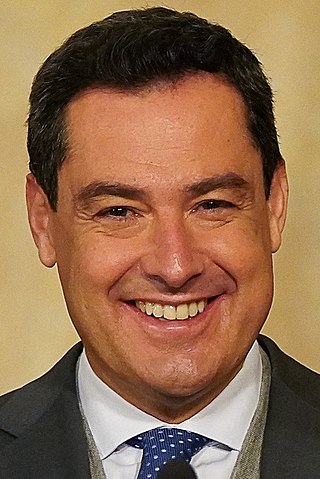
The second government of Juanma Moreno was formed on 26 July 2022, following the latter's election as President of the Regional Government of Andalusia by the Parliament of Andalusia on 21 July and his swearing-in on 23 July, as a result of the People's Party (PP) emerging as the largest parliamentary force at the 2022 Andalusian regional election with an absolute majority of seats. It succeeded the first Moreno government and has been the incumbent Regional Government of Andalusia since 26 July 2022, a total of 804 days, or 2 years, 2 months and 11 days.
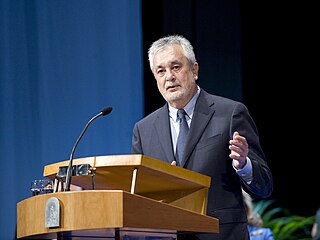
The first government of José Antonio Griñán was formed on 24 April 2009 following the latter's election as President of Andalusia by the Parliament of Andalusia on 22 April and his swearing-in on 23 April, as a result of the resignation of the former president, Manuel Chaves, upon his nomination as Third Deputy Prime Minister in the second government of José Luis Rodríguez Zapatero. It succeeded the sixth Chaves government and was the Government of Andalusia from 24 April 2009 to 7 May 2012, a total of 1,109 days, or 3 years and 13 days.

The government of María Guardiola was formed on 21 July 2023, following the latter's election as President of Extremadura by the Assembly of Extremadura on 14 July and her swearing-in on 17 July, as a result of the People's Party (PP) and Vox being able to muster a majority of seats in the Assembly following the 2023 Extremaduran regional election. It succeeded the third government of Guillermo Fernández Vara and has been the incumbent Government of Extremadura since 21 July 2023, a total of 444 days, or 1 year, 2 months and 16 days.


















